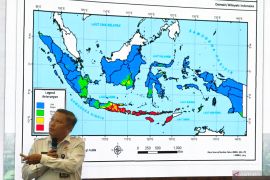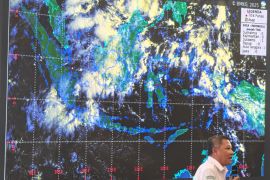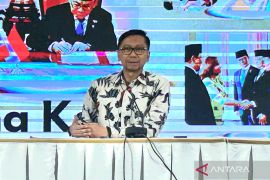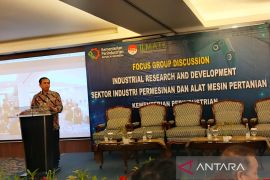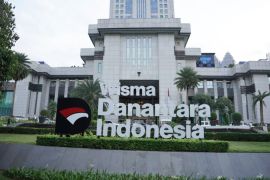KUALA LUMPUR, May 6 (ANTARA/PRNewswire-AsiaNet) --
- Experts from medical and patient communities call on national policymakers in the Asia-Pacific region to take urgent action against preventable strokes that strike millions of people with atrial fibrillation (AF) each year
- Countries in the Asia-Pacific region carry a disproportionate share of the burden of stroke with millions of people affected; a burden that will grow as life expectancy rises(1)
- AF, the most common, sustained abnormal heart rhythm, increases the risk of stroke five-fold and is responsible for 15-20% of all strokes, and for 20% of all ischaemic strokes (caused by a blood clot blocking a blood vessel in the brain)(2,3,4,5)
- The consequences of stroke can devastate not only a patient's life, but also that of families and carers.(6,7) Long-term help and care is required for most survivors
- The economic implications of stroke are significant. For example, in China, the overall mean cost of hospitalization for stroke in 2010 equated to more than half the average annual wage(8)
- The impact of stroke is predicted to rise dramatically as the number of individuals affected by AF is expected to increase 2.5 fold by 2050, due to an ageing population and improved survival of patients with conditions which predispose AF (eg, heart attack)(9,10)
According to a new report, How Can We Avoid a Stroke Crisis in the Asia-Pacific Region?, urgent coordinated action is needed to avoid millions of preventable strokes, which leave many patients who have atrial fibrillation (AF) both mentally and physically disabled, or dead, every year.
To view the Multimedia News Release, please click:
http://multivu.prnewswire.com/mnr/prne/strikeoutstroke/48909/
The report, launched today during the 18th Asian Pacific Congress of Cardiology (APCC) by Action for Stroke Prevention, a group of health experts from across the globe, proposes urgent measures to prevent stroke in Asian-Pacific patients with AF, the most common, sustained abnormal heart rhythm and a major cause of stroke.(2) The report's recommendations are endorsed by 32 leading Asian-Pacific and other global medical societies and patient organizations, reinforcing and recognizing the need for a call to action.
A stroke epidemic across the Asia-Pacific region, and indeed the rest of the world, is imminent if actions are not taken now to slow the rising tide of preventable strokes occurring every year. Professor Graeme Hankey, Neurologist and Head of Stroke Unit at the Royal Perth Hospital, commented, "The incidence of stroke across the Asia-Pacific region is continuing to grow and constitutes both a major public health issue and a significant economic burden. Members of Action for Stroke Prevention have come together to highlight the risk of a stroke crisis and urge policymakers, national governments, healthcare professionals, patient groups and medical societies to act together now to prevent the devastating impact stroke has on people, their families and carers."
Recommendations made by the Report include:
- Improving awareness of the impact of AF and AF-related stroke
- Developing methods for early and adequate diagnosis of AF and stroke risk assessment
- Taking new and better approaches to prevent stroke in patients with AF
- Facilitating the exchange of best practice between national governments in the Asia-Pacific region
- Developing strategies to support adherence to guidelines
- Providing equal and adequate administration of therapy for patients with AF across countries in the Asia-Pacific region
- Advancing research into the causes, prevention and management of AF, and addressing the current paucity of epidemiological information available in Asia-Pacific
Strokes are preventable - prevent them
"With the majority of AF-related strokes being preventable, we believe that implementation of these recommendations now will contribute to the prevention of stroke in patients with AF and, in turn, reduce the dramatically increasing clinical, economic, and social burden of stroke in Asia-Pacific," said Professor Gregory Lip, Professor of Cardiovascular Medicine, University of Birmingham Centre for Cardiovascular Sciences, City Hospital Birmingham, UK.
Every year, 15 million people worldwide experience a stroke.(12) Approximately five million of these suffer permanent disabilities and over five million more die, accounting for 10% of all deaths worldwide.(12-14)
In the Asia-Pacific region in 2004, the approximate number of patients who had survived a stroke at some point in their lifetime was 4.4 million in Southeast Asia and 9.1 million in the Western Pacific region.14 In the same year, the number of first-ever strokes was 5.1 million across these regions.15 This was higher than the estimated number of new cases of cancer.(15)
People who suffer a stroke caused by AF are more likely to remain in hospital for longer, are less likely to be discharged home, and are 50% more likely to remain disabled(16,17) than patients who have a stroke unrelated to AF. An increasing number of people in the Asia-Pacific region are living with AF. In China alone, up to eight million people suffer from AF.(18,19)
"Every year thousands of Australians with atrial fibrillation who suffer a stroke are left disabled, regardless of their age" said Ms Wendy Fromhold, Acting Chief Executive Officer of Australia's National Stroke Foundation. "If we do not suffer with atrial fibrillation ourselves, we will almost certainly care for or know someone who does. It is imperative that we all act together to improve the diagnosis and management of AF if we are to prevent the enormous life-changing consequences that stroke has for patients and carers."
The current economic burden of strokes on national economies in Asia-Pacific is significant. For example, China will lose $558 billion in national income due to the combined consequences of heart disease, stroke, and diabetes.(20)
More significantly the impact of stroke is predicted to rise dramatically as the number of individuals affected by AF is expected to increase due to an ageing population and improved survival of patients with conditions which predispose AF (e.g., heart attack).
Action for Stroke Prevention is supported by an educational grant from Bayer HealthCare. The report, and all related materials, has been determined by the authors independently of Bayer HealthCare
SOURCE: Action for Stroke Prevention
References
1. Liu LS, Caguioa ES, Park CG et al. Reducing stroke risk in hypertensive patients: Asian Consensus Conference recommendations. Int J Stroke 2006;1:150-7
2. Kannel WB, Benjamin EJ et al. Prevalence, incidence, prognosis, and predisposing conditions for atrial fibrillation: population-based estimates. Am J Cardiol 1998;82:457-507
3. Wolf PA, Abbott RD, Kannel WB. Atrial fibrillation as an independent risk factor for stroke: the Framingham Study. Stroke 1991;22:983-8
4. American College of Cardiology. CardioSmart. Atrial fibrillation. 2010
5. Marini C, De Santis F, Sacco S et al. Contribution of atrial fibrillation to incidence and outcome of ischemic stroke: results from a population based study. Stroke 2005;36:1115-19
6. Wolfe CD. The impact of stroke. Br Med Bull 2000;56:275-86
7. White CL, Poissant L, Cote-LeBlanc G et al. Long-term caregiving after stroke: the impact on caregivers' quality of life. J Neurosci Nurs. 2006;38:354-60
8. Wei et al. Variations and determinants of hospital costs for acute stroke in China. PLoS One 2010;28; 5(9):e13041.
doi:10.1371/journal.pone.0013041
9. Go AS, Hylek EM, Phillips KA et al. Prevalence of diagnosed atrial fibrillation in adults: national implications for rhythm management
10. Murphy NF, Simpson CR, Jhund PS et al. A national survey of the prevalence, incidence, primary care burden and treatment of atrial fibrillation in Scotland. Heart 2007;93:606-12
11. Kirchhof et al. Early and comprehensive management of atrial fibrillation: Proceedings from the 2nd AFNET/EHRA consensus conference on AF entitled 'research perspectives in AF'. EurHJ 2009
12. Wolfe C, Rudd A. The Burden of Stroke White Paper: Raising awareness of the global toll of stroke-related disability and death, 2007. http://www.safestroke.org/Portals/10/FINAL%20Burden%20of%20Stroke.pdf. Accessed March 2011
13. World Health Organization. The Atlas of Heart Disease and Stroke. 2004 http://www.who.int/cardiovascular_diseases/resources/atlas/en/. Accessed March 2011
14. World Health Organization. The global burden of disease: 2004 update. Disease and injury regional estimates for 2004. Prevalence for WHO regions. 2008. http://www.who.int/entity/healthinfo/global_burden_disease/PREV6%202004.xls. Accessed March 2011
15. World Health Organization. The global burden of disease: 2004 update. 2008http://www.who.int/healthinfo/global_burden_disease/GBD_
report_2004update_full.pdf. Accessed March 2011
16. Lamassa M, Di Carlo A, Pracucci G et al. Characteristics, outcome, and care of stroke associated with atrial fibrillation in Europe: data from a multicenter multinational hospital based registry (The European Community Stroke Project). Stroke 2001;32:392-8
17. J0rgensen HS, Nakayama H, Reith J et al. Acute stroke with atrial fibrillation. The Copenhagen Stroke Study. Stroke 1996;27:1765-9
18. Zhou Z, Hu D. An epidemiological study on the prevalence of atrial fibrillation in the Chinese population of mainland China. J Epidermiol 2008;18:209-16
19. Hu D, Sun Y. Epidemiology, risk factors for stroke, and management of atrial fibrillation in China. JACC 2008;52:865-8
20. World Health Organization. Cardiovascular diseases (CVDs): Fact sheet Ndegrees317. 2011
http://www.who.int/mediacentre/factsheets/fs317/en/index.html. Accessed March 2011
Editor: PR Wire
Copyright © ANTARA 2011
